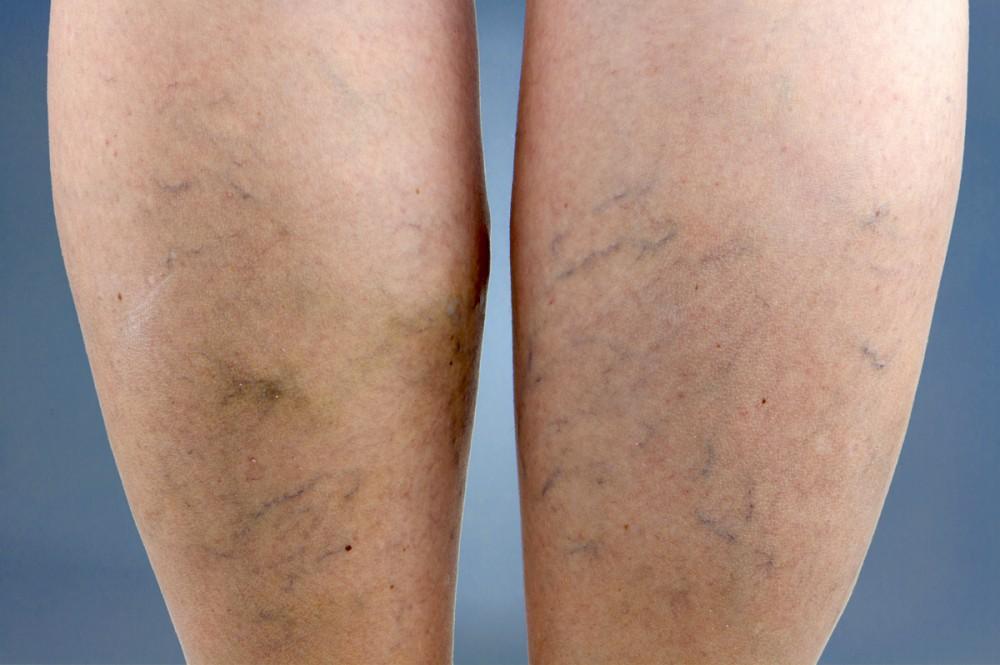When you have chronic venous insufficiency, the valves in your veins — the ones that transport blood to the heart and keep it from flowing back down — become compromised. When these vein valves fail, blood flows back down and collects in the lower leg veins due to gravity. Over time, accumulating blood puts pressure on the veins, causing them to expand and, eventually, create varicose veins.
Varicose veins, which are essentially veins filled with pooled blood, are susceptible and prone to bleeding. Even if you bump or scrape your varicose veins, they may begin to bleed profusely, necessitating an emergency room visit. Venous insufficiency can also cause swelling ankles and feet, skin problems, skin discoloration, leg ulcers, and even deep vein thrombosis, which is lethal.
No, vein therapy can be performed using incredibly easy and minimally invasive treatments with a minuscule chance of side effects. Here are the top five varicose vein treatment options:
Radiofrequency Ablation
Radiofrequency ablation is the most common and recommended treatment for varicose veins. Because of the technologies used to aid in it, this treatment is also known as VNUS and ClosureFAST. It uses thermal energy to change the structure of the vein walls and collapse them.
The vein doctor will inject an anesthetic into your knee during the treatment and make a small incision. This incision is the entrance location for a catheter, which is guided into the sick saphenous vein using ultrasonography. The vein specialist also administers anesthetic throughout the sick vein before activating the catheter, which generates heat energy and collapses the vein walls.
The complete radiofrequency ablation takes less than an hour, and there is no recuperation downtime, allowing you to immediately continue your normal activities. This vein therapy has a 97% success rate, low discomfort, and quick results.
Endovenous Laser Ablation
Endovenous laser ablation is similar to radiofrequency ablation in that it is performed in the office under local anesthetic. This method uses laser radiation to collapse the saphenous veins.
During the operation, the vein specialists numb your knees with a local anesthetic before inserting a catheter and laser fiber through a skin incision. Once the catheter and laser fiber are in place, the vein doctor administers anesthetic through the vein. This triggers an inflammatory response, which rapidly collapses the troublesome vein. The vein is gradually absorbed into the body.
Endovenous laser ablation has a 97% success rate, is entirely safe, and allows you to resume normal activities immediately. The only disadvantage is that endovenous laser ablation produces more post-procedural pain than radiofrequency ablation.
VenaSeal
VenaSeal, also known as vein glue therapy, seals the diseased vein with a medical adhesive. It is one of the most advanced vein treatments available today.
The vein specialist injects a medical adhesive into the damaged saphenous vein during the treatment. This vein glue works immediately by fusing the vein walls, sealing the vein shut, hardening it, and reabsorbing it into the body. Over time, the stored blood flows to healthier veins.
This technique has a 99% success rate, is entirely safe and immediately effective, and requires no anesthetic. The only difficulty is that this new technique is not currently covered by insurance, making it a costly therapy to pay for out of pocket.
Ambulatory Phlebectomy
Ambulatory phlebectomy is a vein treatment in which the doctor makes numerous incisions on the skin's surface and physically eliminates the superficial varicose veins. This operation does not treat the underlying venous insufficiency; it just removes the surface varicose veins. As such, this is regarded as a purely cosmetic therapy that enhances the appearance of your legs but does not address the underlying condition. Most vein doctors utilize this therapy to eliminate superficial varicose veins after completing the original procedure.
Sclerotherapy
Sclerotherapy is largely regarded as the finest minimally invasive treatment for spider veins. During this operation, the vein specialist injects a sclerosant solution into the spider veins, sealing them shut and converting them into scar tissue. The stored blood flows to healthy veins, and the body gradually removes the scar tissue, minimizing the appearance of spider veins.






Comments